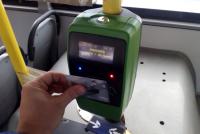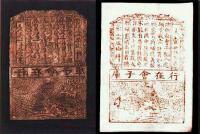Accounting for acquiring transactions. Buyers pay using plastic cards: accounting and cash documents from the supplier. Formation of transactions at the end of the day, crediting of funds from the bank
Stores or service providers that accept consumer plastic cards for payment must correctly reflect revenue in tax and accounting records. In addition, they need to draw up cash documents - for example, when returning money to a client. This article provides detailed recommendations for those who are already using this method of calculation, and for those who are just going to implement it.
How are payments made using cards?
Recently, suppliers of goods and services increasingly provide customers with the opportunity to pay with plastic cards. This view mutual settlements received the name acquiring.
When acquiring, the supplier concludes an agreement with the bank, and the latter installs an electronic device (POS terminal) in the office or store that allows reading information from the client's money card. In addition, the bank opens an account for the supplier to receive the proceeds. At the time of payment, the required amount is debited from the client's card, and after a while (usually in a day or two) it is credited to the seller's bank account.
If trading is carried out via the Internet, buyers most often settle directly on the supplier's website without using a POS terminal. In this case, the client fills out a special secure payment form and indicates in it information about his card. After that, the money is debited from the card and credited to the supplier's account. This method of payment is conventionally called Internet acquiring.
For acquiring services (including Internet acquiring), the bank charges the supplier as a percentage of the payment amount. The interest is withheld immediately at the time of payment, and the proceeds are transferred to the seller's account minus the percentage.
Application of CCP for acquiring
Merchants who accept bank cards for payment are required to use online checkouts. Indeed, according to clause 1 of article 1.2 of the Federal Law of 22.05.03 No. 54-FZ, cash registers are used in the calculations. Settlements, among other things, mean acceptance and delivery of money by bank transfer (Art. 1.1 of Law No. 54-FZ). And using a payment card is a kind of cashless payment. Thus, when acquiring, it is necessary to break through cash registers and transfer information to the fiscal data operator (OFD).
An important detail: if the client paid with a card, the seller is obliged to give him not one, but two checks. The first is a regular cashier's check that looks exactly as if the customer paid in cash. The second is a cash register check (slip). It must contain all the necessary details, in particular, the electronic terminal identifier, date, amount, transaction currency, etc. The slip also requires the signature of the cashier. The client's signature is required only if he does not enter the PIN-code of his card (clause 3.3 of the Central Bank regulation No. 266-P * dated 24.12.04).
Acquiring revenue in tax and accounting
In accounting, income in the form of proceeds received by means of plastic cards is formed on the day when the client paid for the product or service. Until the money debited from the client's card reaches the supplier's bank account, they should be reflected on account 57 “Transfers in transit”. After crediting to a bank account, they must be written off to the debit of account 51 "Current accounts".
In tax accounting, the moment of income generation depends on the supplier's taxation system. Under the main accrual system, income in the form of acquiring proceeds is generated on the day the funds are debited from the customer's card. With the cash method and the “simplified” method, income can be shown at the moment when the money is credited to the bank account. This was confirmed by the Ministry of Finance of Russia in a letter dated 03.04.09 No. 03-11-06 / 2/58 (see "").
Please note: despite the fact that the proceeds are credited to the current account minus the interest retained by the bank, income must be generated for the full amount of proceeds. Companies and entrepreneurs on the simplified tax system must show in the book of income and expenses exactly the full, that is, not reduced by bank interest revenue.
Further, those who apply OSNO can include the bank's percentage in expenses on the basis of subparagraph 25 of paragraph 1 of article of the Tax Code of the Russian Federation. Taxpayers in the simplified system with the object “income minus expenses” are also entitled to recognize costs on the basis of subparagraph 9 of paragraph 1 of article 346.16 of the Tax Code of the Russian Federation. If the object of taxation of the "simplified" is income, then it will not be possible to write off the bank interest (letter of the Ministry of Finance of Russia from; see "").
In accounting, the payment for bank services refers to other costs on the basis of clause 11 of PBU 10/99 "Organization costs".
Example
The trading company is on the main tax system and applies the accrual method. An acquiring agreement has been concluded with the bank, the cost of services is 2 percent of the amount received using the customers' plastic cards. On March 31, customers paid for the goods using cards through a POS terminal, the amount of revenue is 10,000,000 rubles. On April 1, this amount, minus the interest retained by the bank, was credited to the company's account. IN bank statement the percentage is highlighted on a separate line.
DEBIT 62 CREDIT 90 - 10,000,000 rubles. - reflected the proceeds from sales;
DEBIT 57 CREDIT 62 - 10,000,000 rubles. - payment has been received through the terminal. In tax accounting, income was generated in the amount of 10,000,000 rubles.
DEBIT 91 CREDIT 57 - 200,000 rubles (10,000,000 rubles x 2%) - the cost of the bank's services withheld;
DEBIT 51 CREDIT 57 - 9,800,000 rubles (10,000,000 - 200,000) - the money was credited to a bank account In tax accounting, expenses in the amount of 200,000 rubles were generated.
Refund of money received by means of a payment card
If the client, for one reason or another, has refused a product or service paid for with a plastic card, the seller must return the money to him. In this case, the refund must be made to the card, it is impossible to return the funds in cash from the cash desk.
When transferring money for the returned goods, the seller must issue a cash register receipt with the "return receipt" calculation sign. This check must be issued on the cash register of the organization or the individual entrepreneur who accepted money from the buyer when selling the goods. The Ministry of Finance of Russia recalled this in a letter dated 04.07.17 No. 03-01-15 / 42312 (see "").
In accounting, when returning money to a client's card, they most often use the reversal of transactions created at the time of purchase. Simply put, the cancellation of revenue is shown with two transactions. The first - on the debit of account 90 and credit of account 62, the second - on the debit of account 62 and credit of account 57. Then, after debiting money from the supplier's bank account, a posting is made on the debit of account 57 and credit of account 51.
Trading is money. But in modern world money is not only banknotes and coins, but also electronic money. New trends in the global settlement system are forcing accountants to master new accounting tools and methods. Consider acquiring accounting which has entered the practice of trade enterprises.
The concept and application of encwiring
Acquiring is a service provided by a specialized financial institution for technological and information services for settlements using electronic means of payment.
Main participants:
- Bank card holder (buyer) - physical or entitywhich has in financial institution bank account with a bank card attached to it;
- Issuing bank - a banking institution that issued the buyer's card and will transfer funds from the buyer's account to the seller's account;
- Trade enterprise (seller) - a legal entity or an individual entrepreneur who sells goods to a buyer and has the necessary technical means to carry out an acquiring operation;
- Acquiring institution (acquirer) - a legal entity (bank) that provides a merchant with the ability to accept payments for goods (works, services) using bank cards for a certain fee.
For such operations, the bank will open a special account for its client.
Be carefull! The law prohibits setting different prices for cash and non-cash payments. That is, the amount of fees for banking services cannot be included in the price of the goods.
Legal rationale for acquiring
A written agreement for the provision of such a service is concluded between the merchant and the Equar Bank.
The subject of the agreement is to provide a merchant with an opportunity for a fee to accept bank cards as a non-cash settlement instrument for paying for goods, and the subsequent payment by an acquiring institution of the amounts of transactions carried out using bank cards.

The main provisions of the agreement:
- Indication of the name of payment systems and electronic means of payment that are accepted by the seller for payment;
- Procedure for drawing up documents for aciring operations;
- Procedure and terms of settlements between the acquiring bank and the trading company;
- The size of the commission on the crawl of the bank for the settlement service of these operations;
- Security procedures that the merchant must follow when accepting payments using bank cards and transferring data on transactions to the acquirer.
The legal nature of an acquiring agreement is an agreement in favor of a third party:
- On the basis of it, the buyer, who does not personally participate in the contract (does not sign it), receives the right to settle accounts with the seller by bank transfer;
- The risks associated with the use of invalid, counterfeit or stolen bank cards are borne by the merchant.
Initial accounting of acquiring transactions at the seller
The primary accounting of these operations is carried out as follows:
- The trading company is obliged to use KKM and issue a cashier's receipt to the buyer, although the settlement is carried out by bank transfer (Article 5, paragraph 4 of the Federal Law of May 22, 2003 No. 54-FZ);
- The amounts of non-cash receipts in the Z-report will be reflected separately, since transactions using cards are made through to a separate section of the cash register;
- Column 12 of the cashier-operator's journal will reflect the number of bank cards used, and in column 13 - the amount of funds received on them;
- It is not worth writing out a cash order for the amount of non-cash proceeds (total of column 13);
- On the basis of the journal, a statement-report of the cashier-operations department (form No. KM-6) is drawn up for the entire amount (cash + non-cash) proceeds and readings of the KKM counters (form No. KM-7) are taken;
- An electronic journal of payment transactions is transmitted to the acquiring bank (automatically through the electronic terminal at the time of using the card or compiled by the POST terminal at the end of the transaction day).
Accounting for transactions using bank cards
The seller will receive to the current account minus the commission in favor of the acquiring institution. But in accounting, the proceeds should be fully reflected as the income of the enterprise, and the bank commission should be included in expenses:
- or others (clause 11 PBU10 / 99 and clause 1.25 of article 264 of the Tax Code);
- or bank charges if the seller applies a simplified taxation system with a 15% rate (clause 1.9 of article 346.16 of the Tax Code).
Acquiring accounting entries:

Real enrollment money to the seller's account may differ from the moment the goods were sold to the buyer and the corresponding payment by him with the card. Sometimes money is credited only after a few days. If the issuing bank and the acquiring bank are the same person, then the funds are received faster. Otherwise, you will have to wait up to 5 days. In fact, on the basis of an acquiring agreement, the seller credits the buyer, and the acquiring bank undertakes to reimburse the merchant for the entire amount of this loan when the issuing bank transfers the money.
The accounting for this provides for the concept of "Transfers in transit" (p. 57). Then you need the following acquiring transactions:

The goods purchased in this way, the buyer can return, like any other. In this case, the merchant draws up the appropriate electronic documents for the cancellation of the previously performed acquiring operation. And the money is returned to the buyer's private card account or corporate card with return transactions.
If the buyer returns the goods paid for with the card, he cannot be given cash from the cash drawer of the cash register (letter from the UMNS of Russia dated August 13, 2003, No. 29-12 / 44313).
Acquiring operations in 1C: Trade Management 8 edition 11.2
In this article we will look at main stages of registration of acquiring transactions:
1. Customization
2. Acceptance of payment by payment card
From a wholesale customer
... from a retail customer at an Automated Point of Sale (ATT)
... from a retail customer at a Human Point of Sale (NTT)
3. Drawing up a detailed report on acquiring payments
4. Crediting payments by payment cards to the current account of our company.
Customization
To reflect payments from customers with payment cards, enable the option in the section NSI and administration → Treasury → Payment by payment cards... (Fig. 1)

Fig. 1
First, we set up Acquiring terminal in the magazine of the same name (section Treasury Department). We indicate Bank Account and Acquirer... Check the box to allow payment by cards without using Applications for spending DS... (Fig. 2)

Fig. 2
Acceptance of payment by payment card from a wholesale client
The magazine is designed to work with payments by payment cards Equaring operations... The magazine consists of pages:
. Acquiring operations - a list of all payments by payment cards;
. Accounts payable - a list of invoices for payment, with the type of payment Payment Card or Any (if Accounts are not used, then Orders for payment).
. Payment orders - a list of approved applications for spending the DS when making a refund of the amounts clothed with payment cards.
IN ekirringovyh operations journal we can create receipts and refunds.
To complete payment by payment card, select terminal and create new document ... On a bookmark The main choose Counterparty, indicate card number and amount... On the Mortgage Payment decryption indicate basis of payment... (Fig. 3).

Fig. 3
We can reflect the receipt of payment for several client documents at once, for this we choose The list and Pick up by leftovers... We select the objects of calculations we need and transfer them to the document. (Fig. 4).

Fig. 4
We post the document.
Acceptance of payment by payment card from a retail buyer at ATT
To be reflected in the payment card payment base in ATT, in the workplace settings, on the tab Acquiring terminals choose our terminal and connected equipment... (Fig. 5)

Fig. 5
After that, the check form will become active Pay by card... (Fig. 6).

Fig. 6
In the window that appears, the card number and the amount are displayed, the cashier only clicks Perform operation. (Fig. 7)

Fig. 7
Acceptance of payment by payment card from a retail buyer in NTT
To reflect payment by a payment card in NTT in the document Retail Sales Report on the bookmark Payment by payment cards, choose terminal, fill in card number and amount payment. (Fig. 8)

Fig. 8
Drawing up a detailed report on acquiring payments
Further, at our request, the bank sends a detailed report on acquiring payments, we register it with a document Bank report on acquiring operations.
To do this, go to the log Banks' reports on acquiring and create a new document. On the mortgage Receipt of payment from clients reflect counterparty payments... It is convenient to use the form selection, select the necessary payments and transfer to the document. (Fig. 9).

Fig. 9
The bank's report on acquiring will form a posting to the Register of acquiring expenses.
Crediting payments by payment cards to the current account of our company.
To do this, we can go to magazine Cashless payments and create a new document with an operation - Receipt of payment by acquiring... And it's more convenient to go to the bookmark For admission, select basis for payment of DS in transit, as a result of which foundation documents... Choose the one you want and click Make an admission... (Fig. 10).

Fig. 10
In the created document Receipt of cashless DS fill in number and date by bank, and article DDS and we carry out document. (Fig. 11)
We have reflected all operations on accepting payment by payment cards and crediting non-cash DC to the current account.
Learning to enter acquiring transactions (1C: Accounting 8.3, revision 3.0)
2017-06-13T22: 31: 11 + 00: 00Today we will learn how to enter payment from buyers through payment cards (Visa, MasterCard and others).
In another way, such operations are also called acquiring:

In the opened journal, press the "Create" button:

The type of operation we have is naturally "Retail revenue":

Fill in the date and the warehouse field (with the type of a manual outlet):

We create the new kind payment:

- Payment type: Payment card
- Name: for example, Visa
- Counterparty: our acquiring bank VTB
- Agreement: Acquiring agreement (you can also specify the number and date)
Do not forget to indicate the percentage of the bank's commission for acquiring services (1%).
It will turn out like this:

We indicate the amount of payment and draw up the document:

Let's see the postings (DtKt button):

That's right:
62.R (retail buyer) 90.01.1 (revenue) 100,000 (reflected revenue)
57.03 (transfers in transit) 62.R (retail buyer) 100,000 (proceeds in transit, expected to be transferred from the acquiring bank to our checking account)
According to the statement dated January 2, the money (excluding commission) was transferred to our current account.
To reflect the receipt of money, go to the newly created document "Payment by payment cards" and create on its basis "Receipt to the current account":

Please note that the program automatically allocated a bank commission (in in this case 1,000 rubles):

And she took it to other expenses (account 91.02):

Let's post the document and see the postings (button DtKt):

That's right:
51 (our checking account) 57.03 (transfers in transit) 99,000 (payment minus commission is credited to our account)
91.02 (other expenses) 57.03 (transfers in transit) 1,000 (expenses for payment of the acquiring commission)
By the way, if the proceeds were not retail (62.Р), but the usual payment from the buyer (specific counterparty), we simply had to select "Payment from the buyer" as the type of operation, and then instead of 62.Р everywhere, 62.01 would appear with the indication of the selected us of the buyer (counterparty).
That's all
By the way, for new lessons ...
Yours faithfully, Vladimir Milkin (teacher
This article discusses issues related to the regulation of acquiring transactions, as well as their accounting and tax accounting and documentation.
Transactions related to payment with plastic cards have become everyday, as it is a convenient and safe tool. Acquiring allows you to accept plastic cards from leading international payment systems for payment for goods and services. Therefore, more and more trade organizations use this form of payment.
The advantages of acquiring transactions are:
- minimization of risks on transactions related to cash (it is difficult to steal proceeds from plastic cards, and you will not be given counterfeit money);
- increasing the competitiveness of the organization and increasing turnover by attracting new customers, holders of plastic cards;
- the cash settlement limit does not apply to operations with plastic cards.
Terminology
A modern accountant is faced with the task of competently formalizing both traditional cash transactions and transactions related to settlements by means of plastic cards. However, to talk about acquiring, you must first understand the specific terms inherent in this operation. Let's consider the most important of them.
reference
Acquiring - activities credit institution, which includes the implementation of settlements with trade enterprises (services) for transactions made using bank cards.
Payment card (bank) - a plastic card tied to one or several current (personal) bank accounts. It is used to pay for goods (works, services), including via the Internet, as well as to withdraw cash.
Under electronic payment system is understood as a complex of specialized software tools that provide transactions (transfer) of funds from the consumer to the supplier of goods, where the seller has his own account (the most common types of payment systems: Visa and MasterCard).
Acquirer bank - a credit institution that makes settlements with trade organizations for transactions made using payment cards and (or) issues cash to payment card holders who are not clients of the said credit institution. An acquiring bank is required to carry out financial transactions by interacting with payment systems.
POS terminal Is an electronic software and hardware device for accepting payment by plastic cards; it can accept cards with a chip module, magnetic stripe and contactless cards, as well as other devices with a contactless interface. Also, a POS terminal is often understood to mean the entire software and hardware complex that is installed at the cashier's workplace.
Today, many banks provide such a service, you just need to choose the bank, the terms of which are favorable. The bank will charge a commission for its service, and each bank has a different percentage. The bank provides all the necessary equipment and trains employees.
When using the acquiring service, you must have a current account with a bank. Many individual entrepreneurs do not have a current account - in this case, you should choose a suitable bank where you need to open a current account and conclude an acquiring agreement. A simple definition of the principle of work using acquiring - through special equipment, the organization withdraws the amount for the purchase from the buyer's plastic card, and then the acquiring bank transfers it to the organization's current account, withholding the commission for its service from the amount.
What should you pay attention to in regulatory documents?
Funds transfers are currently regulated Federal law from 27.06.2011 No. 161-FZ "On national payment system". The transfer of funds is carried out within no more than three working days starting from the day the funds are debited from the payer's bank account (clause 5 of article 5 of Law No. 161-FZ).
If funds arrive at the organization's current account for more than one day, then account 57 "Transfers in transit" (subaccount 57-3 "Sales by payment cards") is used in accounting to control the movement of money in accordance with the Instructions for the application of the chart of accounts accounting (approved by order of the Ministry of Finance of Russia dated October 31, 2000 No. 94n). Settlements with the acquiring bank can also be taken into account on account 76 "Settlements with different debtors and creditors".
Revenue from the sale of goods is income from the ordinary activities of a trade organization and is recognized on the date of transfer of goods to the buyer, regardless of the date and procedure for payment for the goods (clause 5, clause 6 of PBU 9/99 "Income of the organization"). Actual cost goods sold are recognized as expenses for ordinary activities and are debited from account 41 "Goods" to the debit of account 90, subaccount "Cost of sales" (clauses 5, 7, 9, 10 of PBU 10/99 "Organization's expenses" (hereinafter - PBU 10/99 )).
It's important to know
Receipt cash order for the amount of proceeds on cashless payments not discharged.
The costs of paying for the services of the acquiring bank, which makes settlements for transactions using payment cards, are accounted for as part of other costs and are reflected in account 91 subaccount "Other costs" as of the date the proceeds are credited to the organization's settlement account (clause 11, 14.1 PBU 10/99 ). The proceeds from the sale of goods using bank cards are credited to the organization's settlement account, as a rule, minus the bank's fee.
Retail organizations have the right to account for the goods purchased and sold by them at the cost of their acquisition or at sales prices with a separate allowance for markups (discounts) (clause 13 of PBU 5/01 "Accounting for inventories").
The selected options for accounting for goods should be fixed in the accounting policy.
Accounting
To begin with, let's establish the sequence of acquiring operations:
- the cashier activates the customer's card using the terminal, information about the card is instantly transmitted to the processing center;
- after checking the current account balance, a slip is printed in two copies, which must be signed by both the buyer and the seller;
- a copy of the slip signed by the seller is given to the buyer. The second copy (signed by the buyer) remains with the seller. The seller must verify the signature sample shown on the card with the signature on the slip;
- the seller is obliged to use KKM in such operations and issue a cashier's receipt to the buyer.
Payments made by payment cards break through to a separate section of the cash register and are reflected separately in the Z-report as the amount of non-cash proceeds. At the same time, in the cash register, the form in column 12 reflects the number of plastic cards for which payments were made, and in column 13 the amount received when paying with these cards is indicated. Information from the cashier's journal about the amount of proceeds received both in cash and by means of plastic cards is transferred to the statement-report of the cashier-operator (form No. KM-6).
note
The services of the acquiring bank for making settlements are not subject to VAT tax (subparagraph 3, paragraph 3, article 149 of the Tax Code of the Russian Federation). Consequently, the cost of the bank's services does not include "input" VAT.
The scheme for documenting acquiring transactions looks like this:
- at the end of the working day, acquiring obliges the organization to report to the bank for each transaction carried out with plastic cards. For this purpose, an electronic journal generated by the POS terminal is sent to the bank;
- the bank checks the documents submitted to it;
- the bank transfers to the merchant the funds paid by payment cards.
An acquiring agreement, as a rule, implies that the bank transfers to the organization's current account the funds due to it, minus its remuneration.
However, the entity acts as the seller and is required to report revenue in full, including the agreed bank fees. In this case, the bank's commission in both accounting and tax accounting is reflected as “other expenses” using account 91 “Other expenses”. Organizations using the simplified tax system (with the object of taxation income reduced by the amount of expenses) can also take into account the bank's services in expenses.
There are two main options for reflecting such transactions in accounting:
- the transfer of funds is carried out by the bank on the day of payment with plastic cards (see example 1);
- the transfer of funds by the bank does not occur on the day of payment by cards (see example 2).
Example 1
On September 13, 2014, using bank cards through the electronic payment system, LLC “Ritm” received payments from buyers for goods in the amount of 46,830 rubles (including VAT 18% - 7,143.56 rubles). An acquiring agreement was concluded with the servicing bank, on the basis of which the amount of proceeds for the goods sold was transferred to the organization's current account, minus remuneration. The amount of remuneration is 1.2 percent of the proceeds received. The transfer of funds is carried out by the bank on the day of payment by plastic cards.
The following entries will be made in accounting LLC "Ritm":
DEBIT 62 CREDIT 90 subaccount "Revenue"
- 46 830 rubles. - reflects the proceeds from the provision of services using plastic cards in the calculations;
DEBIT 90 subaccount "VAT" CREDIT 68
- 7143.56 rubles. (RUB 46,830 x 18/118) - VAT was charged on the amount of proceeds using plastic cards in the calculations;
DEBIT 51 CREDIT 62
- 46 830 rubles. - funds debited from customer accounts have been credited to the current account;
DEBIT 91 subaccount "Other expenses" CREDIT 51
- 561.96 rubles. (RUB 46,830 x 1.2%) - expenses related to payment of commissions to the bank were recognized.
Example
For September 14, 2014, the revenue of Trio LLC amounted to 64,900 rubles, including 47,200 rubles using plastic cards. The agreement with the bank stipulates that the funds are credited to the organization's current account the next day after receiving the electronic magazine (a POS terminal is installed), the bank's commission is two percent of the amount of payment by a plastic card. The transfer of funds by the bank takes place the next day after payment by card.
In accounting LLC "Trio" the following entries will be made:
DEBIT 62 CREDIT 90 subaccount "Revenue"
- 47 200 rubles. - reflects the proceeds from the provision of services using plastic cards in the calculations;
- 2700 rubles. (RUB 17,700 x 18/118) - VAT charged on the amount of cash proceeds;
DEBIT 90 subaccount "VAT" CREDIT 68
- 7200 rubles. (RUB 47,200 x 18/118) - VAT was charged on the amount of proceeds using plastic cards in the calculations;
DEBIT 50 CREDIT 90 subaccount "Revenue"
- 17,700 rubles. (64,900 - 47,200) - proceeds from the provision of services for cash were capitalized on an incoming cash order;
DEBIT 57 subaccount "Sales by payment cards" CREDIT 62
- 47 200 rubles. - sent an electronic journal to the bank;
DEBIT 57 subaccount "Cash collection" CREDIT 50
- 17,700 rubles. - funds were collected in the bank (a cash outflow order was issued);
DEBIT 51 CREDIT 57 subaccount "Sales by payment cards"
- 46 256 rubles. (RUB 47,200 - RUB 47,200 x 2%) - funds debited from customer accounts have been credited to the current account (minus commissions);
DEBIT 91 subaccount "Other expenses" CREDIT 57 subaccount "Sales by payment cards"
- 944 rubles. (RUB 47,200 x 2%) - expenses on payment of commissions to the bank were recognized;
DEBIT 51 CREDIT 57 subaccount "Cash collection"
- 17,700 rubles. - cash is credited to the current account.
Now let's look at the acquiring operation from the side of tax accounting.
Value added tax
Let us recall that the sale of goods on the territory of Russia is subject to VAT. The tax base is determined on the date of transfer of ownership of the goods to the buyer as the cost of the goods (net of VAT) (clause 2 of article 153, clause 1 of article 154, subparagraph 1 of clause 1 of article 167 of the Tax Code of the Russian Federation). Taxation is carried out at a rate of 18 percent (clause 3 of article 164 of the RF Tax Code).
The acquiring bank's remuneration is recognized by trade organizations non-operating expenses (subparagraph 15, clause 1 of article 265 of the Tax Code of the Russian Federation).
Payment by credit card actually implies a prepayment by the buyer. This must be taken into account when calculating the amount of VAT. The date of VAT calculation for the seller will be the date of receipt of funds from the buyer, as provided for in subparagraph 2 of paragraph 1 of Article 167 Of the Tax Code... Since the moment of determination tax base for VAT is the earliest of the following dates: the day of shipment (transfer) of goods (works, services), property rights or the day of payment, partial payment on account of the forthcoming supply of goods (performance of works, services), transfer of property rights.
Income tax
On the date of transfer of ownership of the goods to the buyer, the proceeds received (net of VAT) are recognized as income from sales (clauses 1, 2 of article 249, clause 1 of article 248, clause 3 of article 271 of the Tax Code of the Russian Federation). The specified income for the purposes of taxation of profits is reduced by the cost of purchasing the goods, which, in accordance with article 320 of the Tax Code, refers to direct costs (subparagraph 3 of paragraph 1 of article 268 of the Tax Code of the Russian Federation).
Amount withheld agency fee (net of VAT) as of the date of approval of the agent's report refers to other costs associated with production and sales (subparagraph 3 of paragraph 1 of article 264, subparagraph 3 of paragraph 7 of article 272 of the Tax Code of the Russian Federation).
To check the correctness of the reflection of the acquiring transaction, you need to check the posting of amounts from the Z-report to accounts 50 and 57 on a daily basis, "Sales by payment cards" subaccount. Moreover, it is necessary to compare not only receipts per day, but also the cumulative total, highlighted in a separate line in the Z-report. This will allow you to track the completeness of the posting of revenue.
In order to track the receipt of proceeds to the bank and the correct distribution of the bank's commission, you need to compare daily the turnover on the credit of account 57 subaccount "Sales by payment cards" and the amount of turnover on the debit of accounts 91 subaccount "Other expenses" (bank commission) and 51 subaccounts "Receipts on payment cards ". If everything is correctly spaced, then they should match.
And, of course, account 57 should not have a balance at the end of the day, provided that payments by payment cards are received from the bank to the current account on the same day. If this condition is not met, then the account balance should contain only the debit turnover of the previous day (or the two previous days, this directly depends on how often the bank transfers money for acquiring transactions to the company's current account).
You can also check yourself for the following typical mistakes:
- an accountant may reflect in accounting the proceeds from the sale of goods not at the time of transfer of the goods to the buyer, but at the time of receipt of funds from the bank. This error leads to a distortion of accounting and tax reporting, when payment for goods with a payment card and the transfer of funds by the bank to the current account fall on different reporting (tax) periods;
- it is also possible to be mistaken if you reflect in accounting the proceeds from the sale of goods minus the commission charged by the bank under the acquiring agreement. This error leads to underestimation of not only proceeds from sales, but also expenses, as a result, accounting and tax reporting... For an organization located on the simplified tax system with the object of taxation "income", this error leads to an underestimation of the taxable base for single tax for the amount of bank commission;
- other violations may be the sale of goods by payment cards without using a cash register, the lack of information about the proceeds received using bank cards in the cashier-operator's journal, the cashier-operator's certificate-report and information on the readings of the cash register counters.






